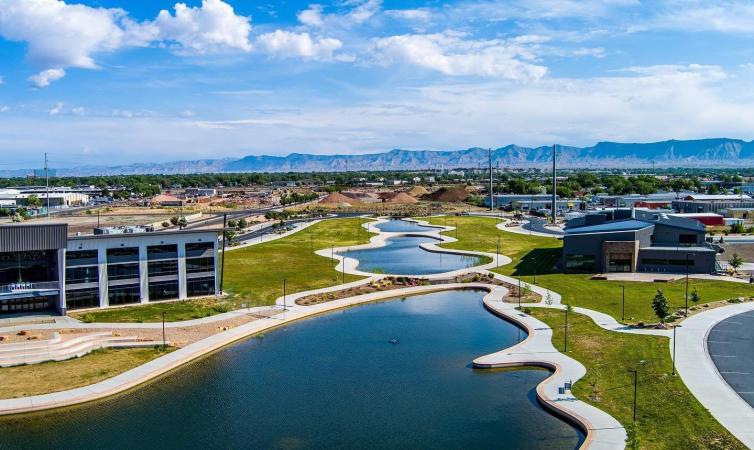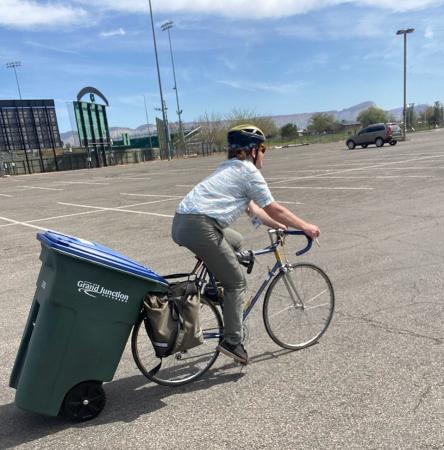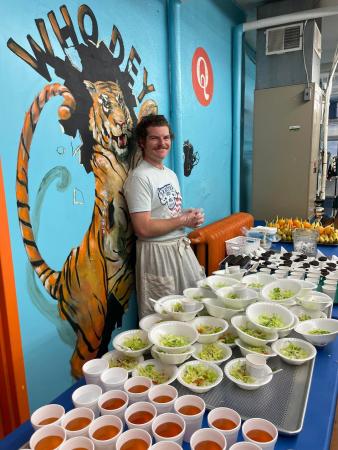The City of Grand Junction continues to lead the way in strategic planning and responsible scalability. In doing so, the City has hired personnel to assist in achieving these goals, including hiring a new mobility planner, Henry Brown. One of Brown’s goals is to make residents and guests safer while practicing sustainable travel around Grand Junction.
In January of 2023, Brown accepted the position and moved from Cincinnati to Grand Junction. While he wasn’t familiar with the Grand Junction area, he was drawn to the easy access to fantastic skiing, hiking and camping. He was also impressed by the dynamic dining, arts and culture scene in Grand Junction, including the symphony orchestra.
From a career perspective, Brown was intrigued by the level of thoughtfulness that has gone into making Grand Junction a place that’s safe and easy to navigate. “It meant I wouldn’t be starting from scratch in my new role. It speaks to the livability of the area. The City’s dedication to making the area an even better place to live, work, and play was very compelling,” he said. “The fact that they are staffing these new divisions — housing, mobility, and sustainability —shows that the City is tackling some of the significant cultural issues that could grow if they are not addressed proactively.”
Since starting the position, Brown has been developing and implementing a wide range of projects and programs that support bicycle, micro-mobility, pedestrian, and transit services that align with the City’s mobility goals. He has worked on establishing a grant process to help businesses and neighborhoods install more bike racks, as well as serving as the staff liaison for the Urban Trails Committee, which advises City Council on mobility in Grand Junction. Many of Brown’s mobility initiatives are outlined in the City’s Pedestrian and Bicycle Plan (PBP) adopted by City Council in May 2023.
“The overarching purpose of the pedestrian and bicycle plan is to have a safe, connected, and well-maintained network of roadways that people of all ages and abilities can travel on for both recreation and transportation purposes,” he said. “The transportation part is critical because people often think about bicycling as only recreational without thinking about the other side of it,” Brown said. “For many families and individuals, transit is the number two expense behind housing. Automotive travel is the most expensive way to travel around a city, in terms of both user cost and societal cost.”
Brown is a mechanical engineer and worked in Cincinnati as a product design engineer for six years before moving to Grand Junction. While the jobs are very different, there are similarities. “The City is also using a data-based approach to solve problems that are conventionally seen as less quantitative,” he said. For example, he takes large data sets from programs like the new electric scooters to figure out which routes people are taking. This guides decisions to further enhance the scooter service.
In addition, five-year historical data from sources like the High Injury Network, which maps the locations where crashes result in injuries or fatalities for pedestrians or cyclists, is crucial. It helps Brown and the City to figure out what areas require work in order to make transportation safer and mitigate injuries and crashes.
According to Brown, there are plans to add buffers of grassy strips, add bike lanes between moving traffic, and widen sidewalks on busier corridors. “Main Street in Downtown Grand Junction is ahead of the times with its traffic-calming elements like sweeping curves, narrow roadways, fences, planters, and a streetscape that visually communicates ‘slow down.’ All of those elements help reinforce the idea that this is a place where people are coexisting at different speeds and forms of travel,” he said. Brown is excited about creating opportunities for guests and residents to navigate Grand Junction on either two feet or two wheels, and he looks forward to what’s to come.








